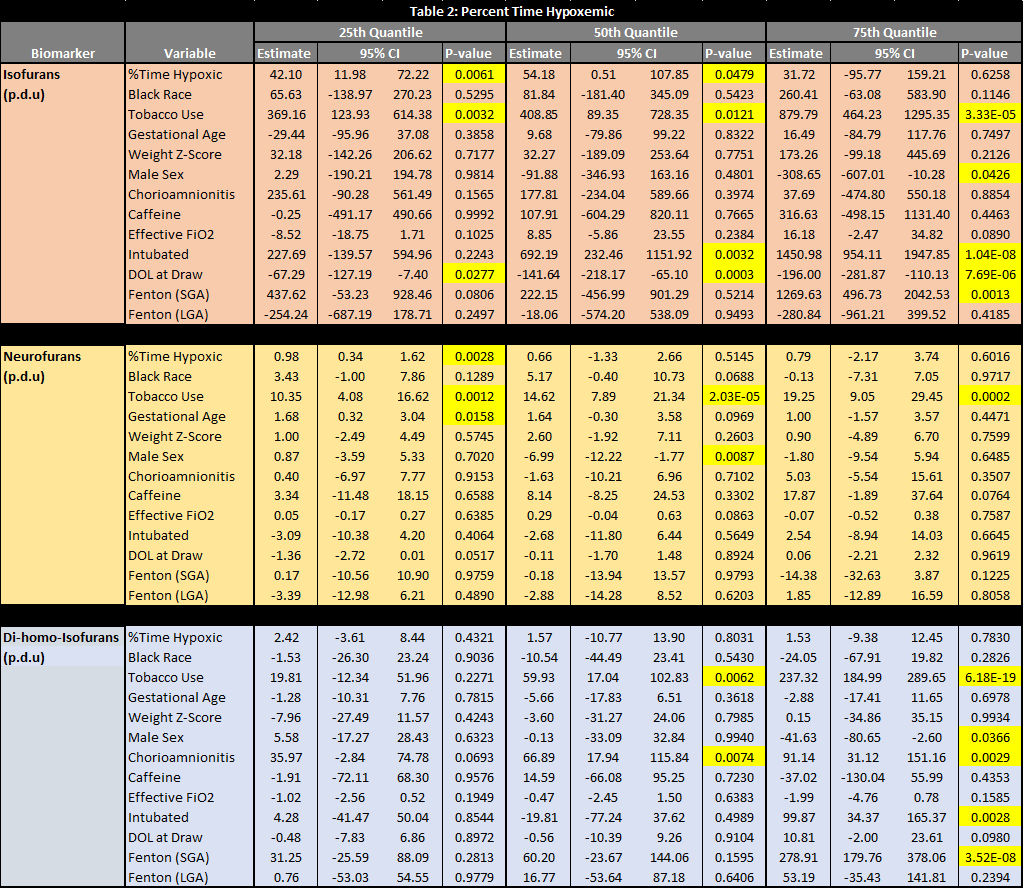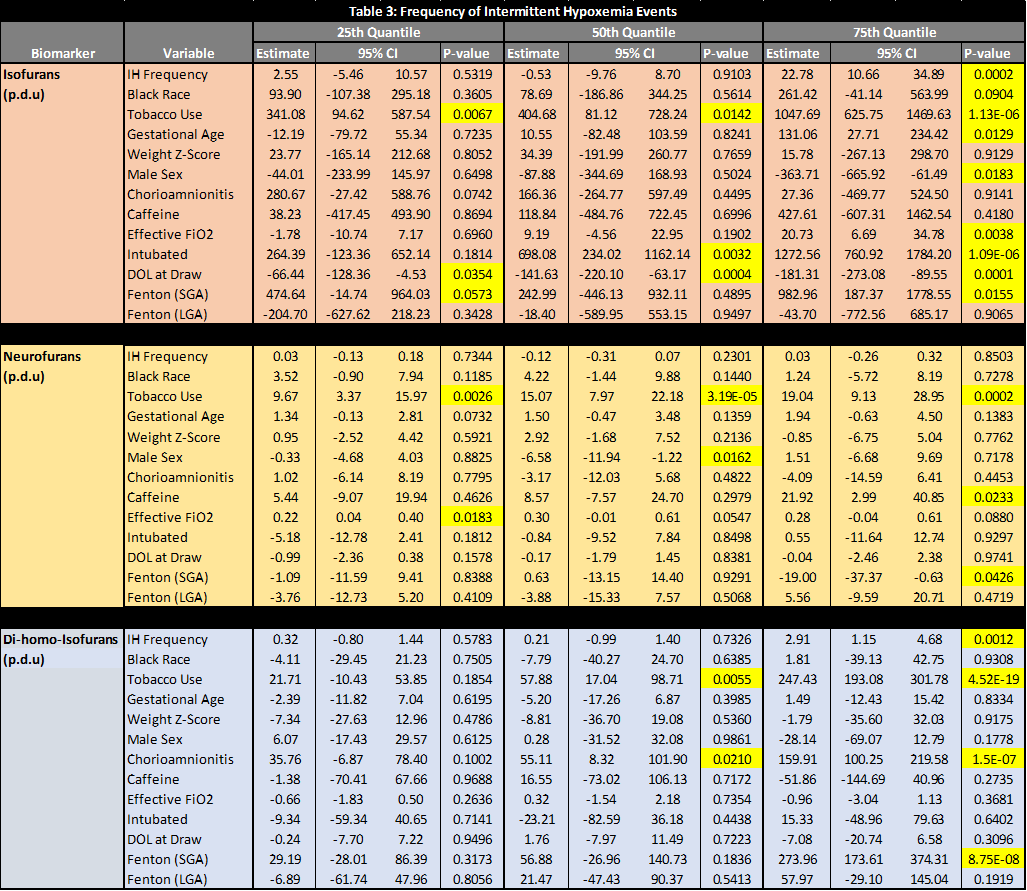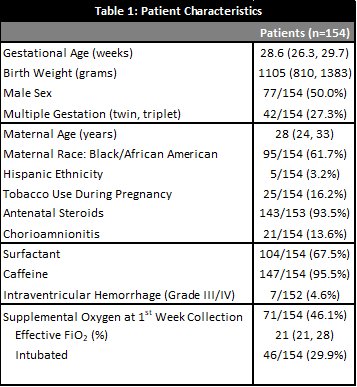Neonatal General
Neonatal General 1: Basic Science and Cardiovascular
251 - Oxygen Desaturations Are Associated with Elevated Lipid Peroxidation Products in Premature Neonates
Publication Number: 251.13
- TR
Thomas M. Raffay, MD (he/him/his)
Assistant Professor
Case Western Reserve University/Rainbow Babies & Children's Hospital
Cleveland, Ohio, United States
Presenting Author(s)
Background:
Intermittent hypoxemia (IH) events are common in premature neonates. Elevated IH are associated with adverse outcomes such as retinopathy of prematurity, intraventricular hemorrhage, bronchopulmonary dysplasia, neurodevelopmental impairment, and mortality. IH induces oxidative stress in laboratory models and may be a mechanistic pathway in morbidities of prematurity. Urine lipid peroxidation products are the result of polyunsaturated fatty acid oxidation in the eye, brain, and various cell membranes.
Objective:
Explore associations between IH and urine lipid peroxidation products.
Design/Methods:
A cohort of premature neonates (< 31 weeks gestation) had urine samples collected at 7 ±3 days of age. Oxygen saturation (SpO2) was continuously archived during hospitalization. Time in hypoxemia (percent time with SpO2< 80%) and frequency of IH/day (SpO2< 80% for >10 seconds and < 5 minutes) were assessed during the 24-hour period preceding urine collection. Urine samples were processed by solid phase extraction and analyzed by ultra-performance liquid chromatography-tandem mass spectrometry for total lipid peroxidation products (Isofurans, Neurofurans, and Di-homo-Isofurans) [doi: 10.1089/ars.2021.0168]. Adjusted multiple quantile regression (QR) was performed at the 25th, 50th, and 75th quantile for each lipid peroxidation product outcome with the IH predictor and a priori co-variants.
Results:
Patient characteristics of the 154 subjects are reported in Table 1. After adjustments, positive associations between percent time hypoxic and Isofurans at the 25th and 50th quantiles, and Neurofurans at the 25th quantile in QRs were detected (Table 2). For IH frequency, positive associations with Isofurans and Di-homo-Isofurans were detected at the 75th quantile (Table 3). Maternal tobacco use during pregnancy was positively associated with Isofurans and Neurofurans at 25th, 50th and 75th quantiles and Di-homo-Isofurans at 50th and 75th quantiles. Intubation status was positively associated with Isofurans at 50th and 75th quantiles. Chorioamnionitis was positively associated with Di-homo-Isofurans at 50th and 75th quantiles. Small for gestational age was positively associated with Isofurans and Di-homo-Isofurans at the 75th quantile.
Conclusion(s): These new data suggests that specific markers of oxidative stress may increase in relation to early IH exposure. This exploratory analysis also identifies patient characteristics associated with elevated lipid peroxidation. Future studies are needed to better understand mechanisms and relationships to morbidities of prematurity.
Funding: NIH U01HL133643 and U01HL133708.


